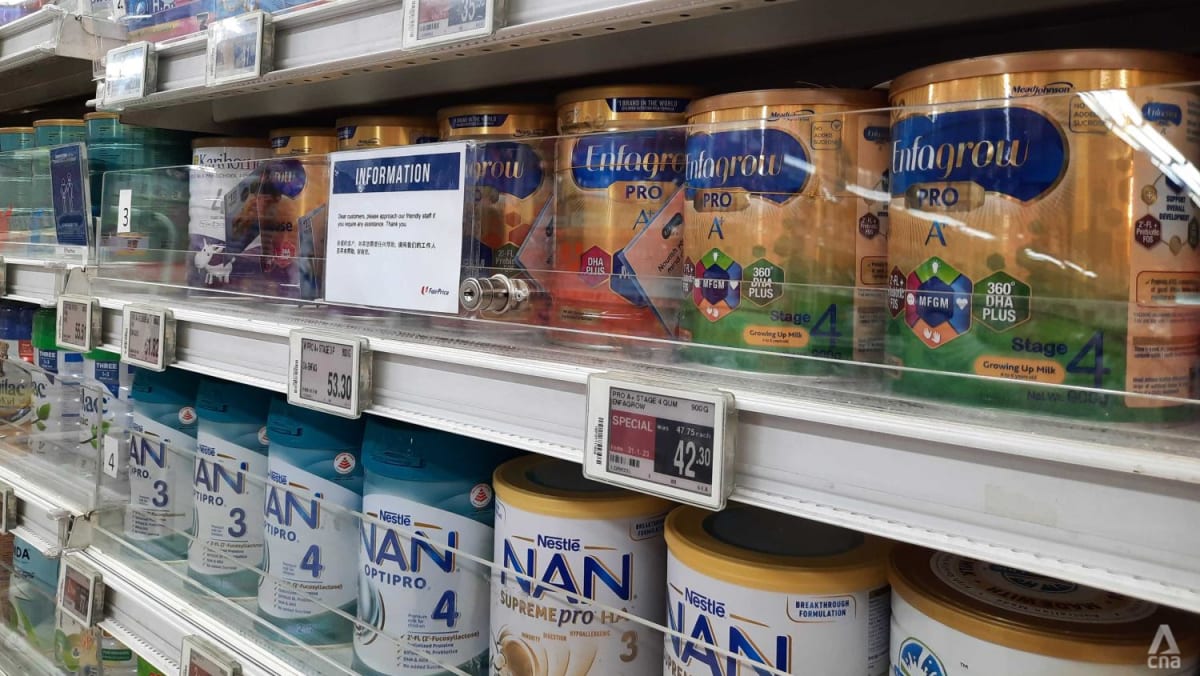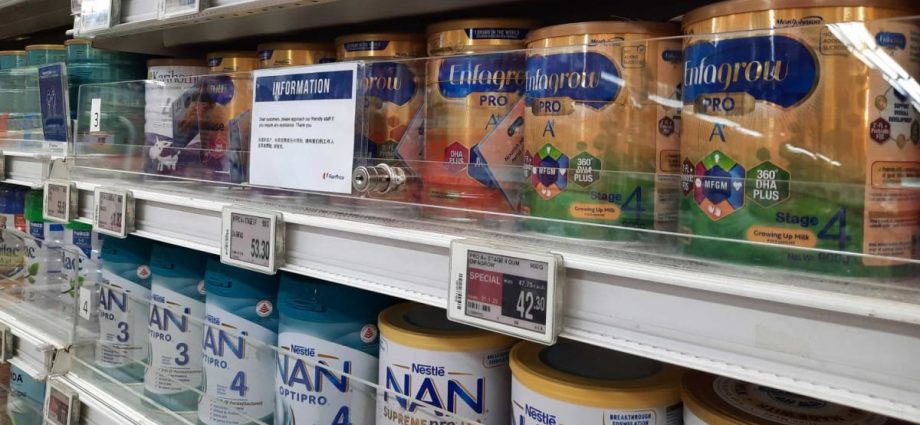
SINGAPORE: There were 80 cases of theft involving milk powder from supermarkets or grocers last year, causing estimated losses of S$27,000, the Singapore Police Force (SPF) said.
The figures were released by the authorities on Wednesday (Jan 25) in response to media queries following measures by a supermarket chain to prevent such thefts.
Last week, NTUC FairPrice told CNA that it had installed plastic screens at its Bukit Batok MRT outlet to prevent the shoplifting of infant formula.
This “new initiative” had been in place for two weeks and the retailer said then it was considering the possibility of extending the measure.
A check by CNA found that plastic screens had also been installed in the same section at another FairPrice outlet in Boon Lay Shopping Centre, also to prevent thefts.
The move had raised concerns among online users that such shoplifters could have been parents who were unable to afford infant formula.
MP ADDRESSES ISSUE
Mr Murali Pillai, the Member of Parliament for Bukit Batok, addressed the issue last Thursday. He said in a Facebook video that the “sensational nature” of a media report might have given people the impression that there were people “who can’t even afford milk powder for their children”.
This, Mr Murali said, was not true following checks he had made with the police. According to him, the typical shoplifter that FairPrice was concerned with were those stealing infant formula to turn a profit.
He then made assurances that his ward, Bukit Batok, had schemes to help low-income families with such necessities.
POLICE STATISTICS
In response to queries about the typical profile of such shoplifters, the police said there were 73 cases of milk powder theft in 2020, 96 in 2021, and 80 in 2022, resulting in estimated losses of S$18,000, S$26,000 and S$27,000 respectively.
The majority of the offenders were aged “between 20s to 40s”, the police said, adding that around 35 per cent of such cases were carried out in groups of two or more.
No other figures on the profile of offenders were provided.
Of the cases, around 39 per cent were prosecuted in court.

